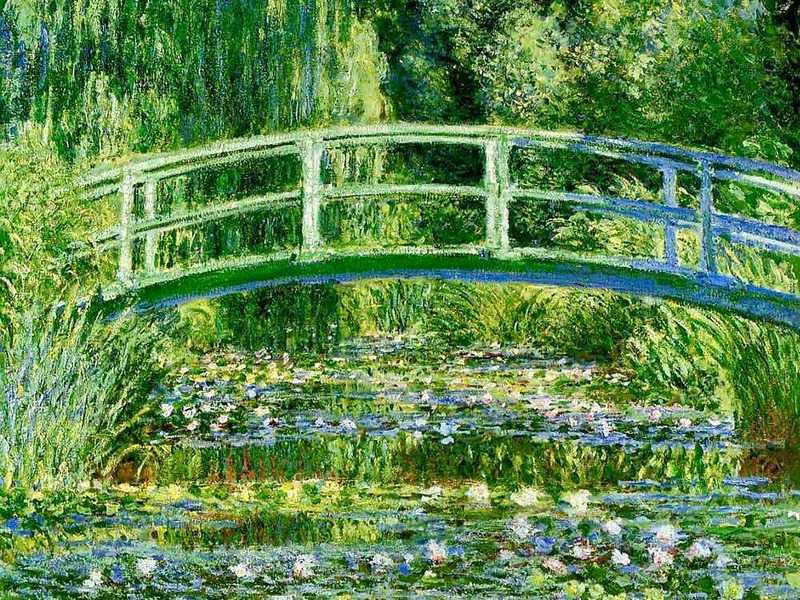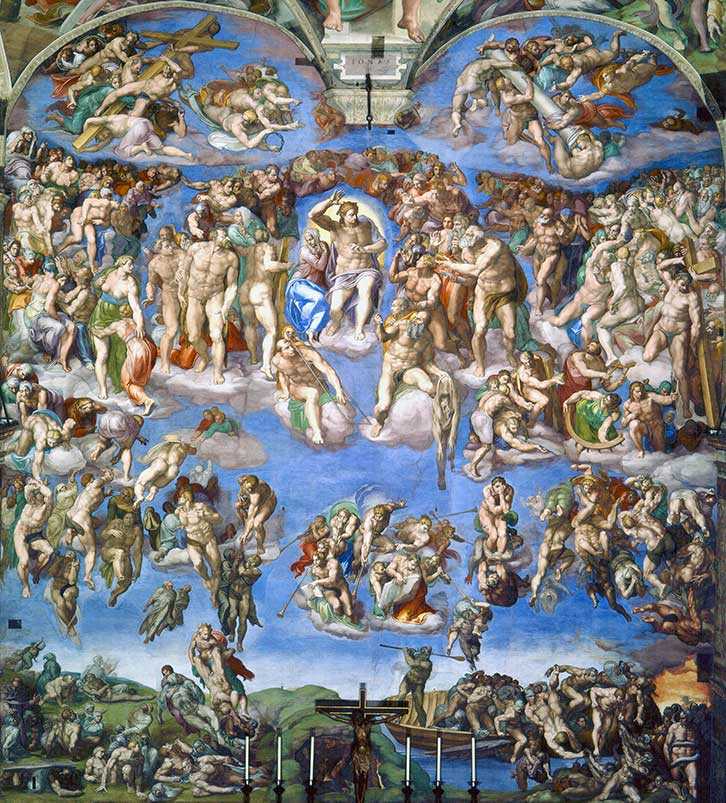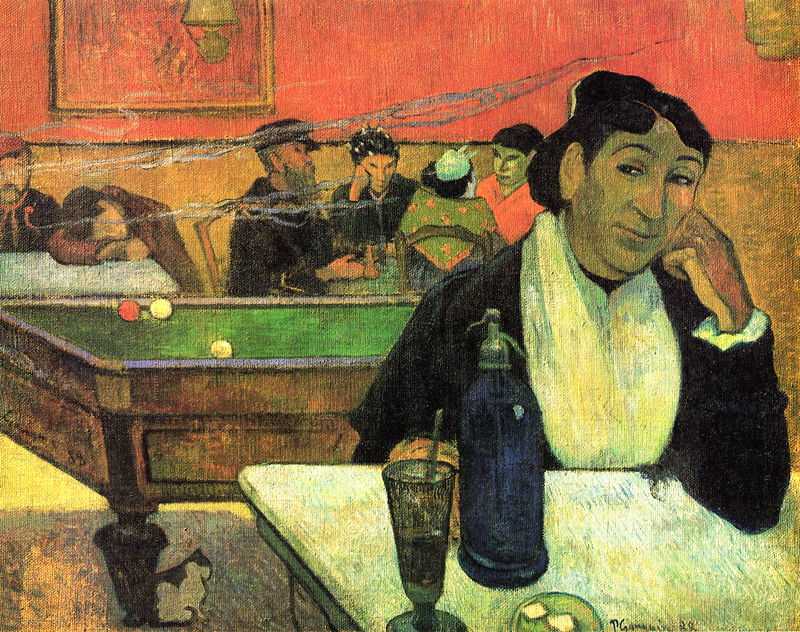1. A to E
Here's our first batch of definitions, taking you from Abstraction to Expressionism.
Abstraction (or abstract art)
Works that do not seek to depict a scene or object, but instead use colour, shape, line and form to create compositions that are non-representational or non-objective. Famous exponents of this type of art are Jackson Pollock, Wassily Kandinsky, Kazimir Malevich, Mark Rothko and Piet Mondrian.
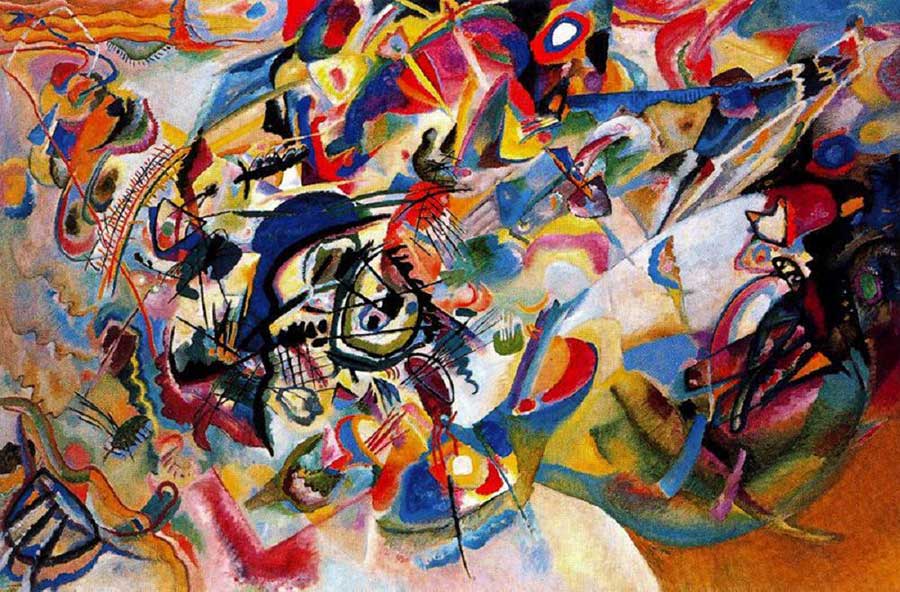
Art Deco
Taken from the French term 'Arts Decoratifs'; Art Deco is an artistic and design style that emerged in the 1920s and 1930s. It is characterised by bold geometric shapes, stylised forms, and an emphasis on luxury and glamour. Art Deco originated in France and quickly spread throughout Europe and the United States, becoming a popular design style for architecture, interior design, fashion, and visual arts. It often features stylised motifs such as sunbursts, zigzags, and chevrons, and can be found in a wide range of products, from furniture and jewellery to buildings (such as the Chrysler building in New York) and automobiles.
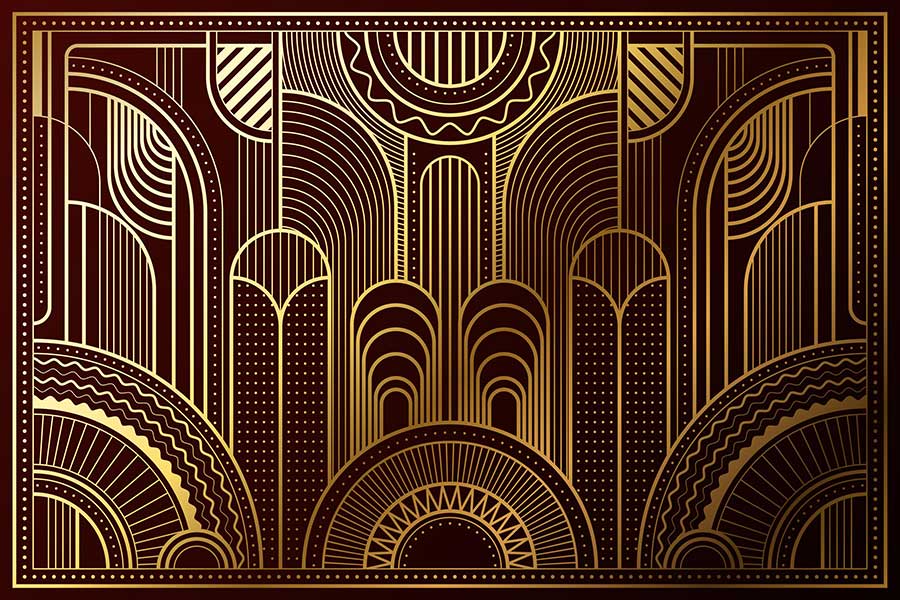
Arts and Crafts
The Arts and Crafts movement was a design and social movement that originated in Britain in the late 19th century and spread worldwide. The movement aimed to promote traditional craftsmanship and oppose the mass-produced, machine-made goods that dominated the industrial era. It had a significant influence on architecture, decorative arts, and design, with its proponents seeking to create a unified style that combined simplicity, functionality, and beauty. The movement emphasised the use of natural materials and simple forms, often drawing inspiration from medieval and folk art. Its leading lights were William Morris, John Ruskin, and Gustav Stickley.
Avant-garde
French military term for ‘advanced guard’ (ie normally a reconnaissance unit which scouted out the battlefield); in artistic terms, avant-garde means those who innovate, experiment or invent. So the impressionists in the 1860s would have been considered avant-garde.
Barbizon school
An art movement that emerged in the mid-19th century in France, named after the village of Barbizon (on the edge of the Fontainebleau Forest near Paris, a gathering place for artists). Members of the school focused on painting landscapes and other scenes from nature, often working outside, and seeking to capture light and atmosphere. By contrast with the impressionists, however, the Barbizon painters used a muted palette and focused on subtle variations of colour and tone. Key Barbizon artists are Jean-Baptiste-Camille Corot, Théodore Rousseau, and Jean-François Millet.
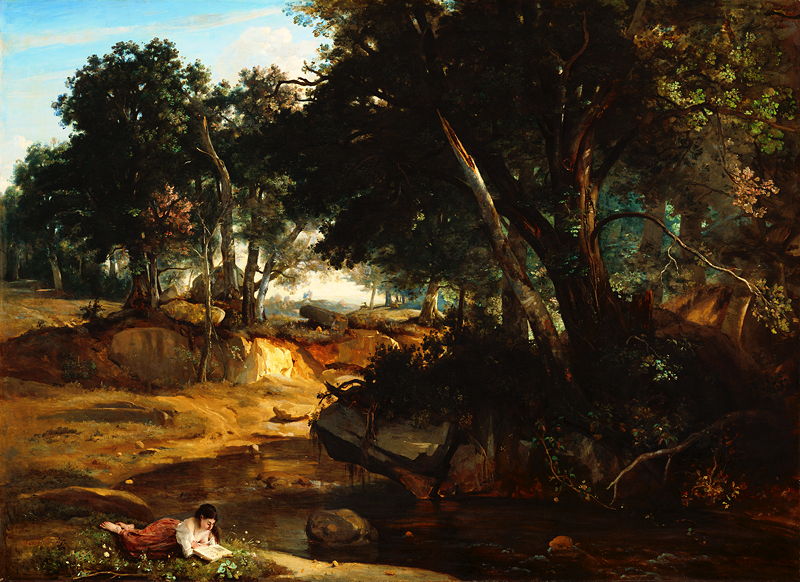
Baroque
Extravagant and intricate art from the 17th and early 18th century, characterised by dramatic lighting, intense emotion and a sense of immediacy and energy. Baroque artists often use strong contrasts between light and dark (known as chiaroscuro) and dramatic poses. Eventually the Baroque era was replaced by the Rococo period. The most famous Baroque artists are Caravaggio, Rembrandt and Rubens.
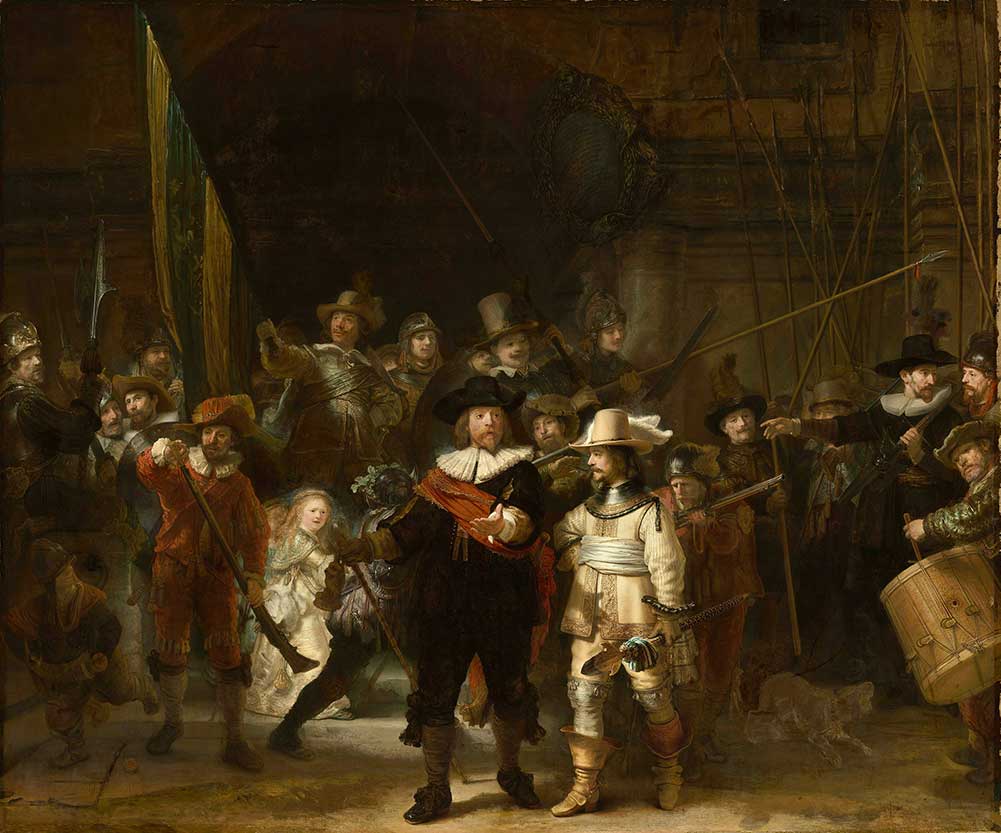
Belle Epoque
French term meaning ‘beautiful era’; describes the period from 1890 to the start of World War I in 1914; Monet was productive during this period, which also saw Pablo Picasso and Henri Matisse develop into mature artists.
Classical
Classical art refers to the art of ancient Greece and Rome, produced between the 5th Century BC to the 4th Century AD. It is characterised by its emphasis on symmetry, proportion, and idealised beauty, as well as its use of naturalistic forms and realistic depictions of the human figure. Not much classical painting survives because the pigments were too unstable. But lots of pottery, mosaics and sculpture. Classical art inspired Renaissance artists such as Leonardo da Vinci, Michelangelo and Raphael.

Chiaroscuro
An Italian term that means ‘light-dark’, used to describe a dramatic colour contrast in a painting. Early exponents of chiaroscuro were the Renaissance and Baroque artists Caravaggio, Rembrandt and da Vinci.
Composition
The arrangement of different elements of a painting to produce (hopefully) a coherent whole; critics will often remark on the cluttered/(dis)organised/unusual composition.
Cubism
Cubism is a style of art that emerged in the early 20th century, pioneered by Pablo Picasso and Georges Braque. It is characterised by a fragmented approach to representation, where objects are broken down into their constituent parts and depicted from multiple perspectives simultaneously. In cubist paintings, the traditional techniques of perspective, foreshortening, and modelling are often abandoned in favour of a flattened, geometric approach that emphasises the two-dimensional surface of the canvas. Cubism was a radical departure from the representational conventions of the past, and it had a profound influence on modern art. It is one of the most important art movements of the 20th century.
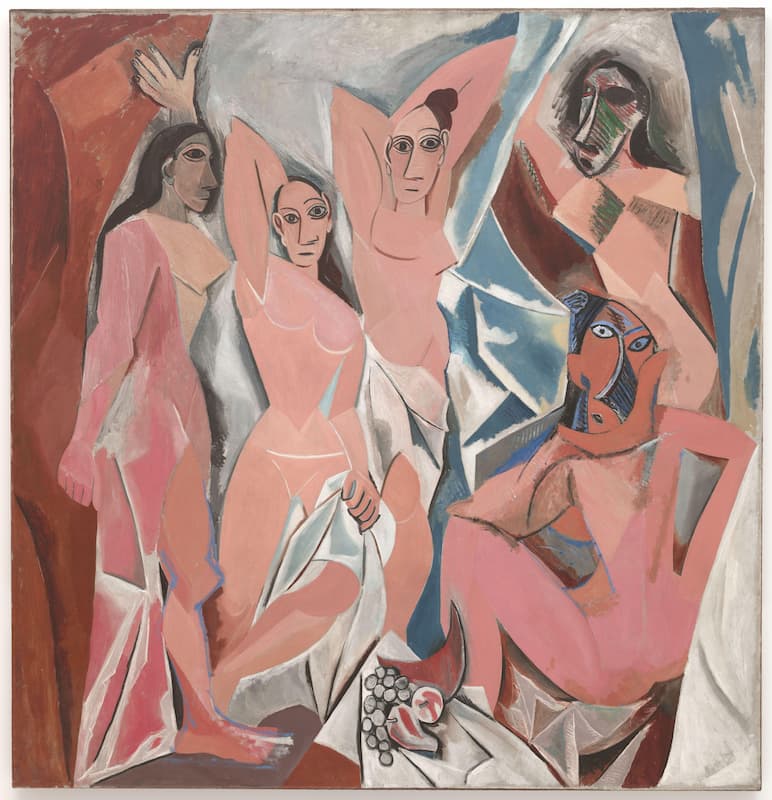
Dadaism
Dadaism, or simply Dada, was an art movement that emerged during World War I in Europe, particularly in Zurich. It rejected traditional values and celebrated chaos, irrationality, and absurdity. Dadaists believed that the rationality and order that had led to the war was a failure of Western civilisation, and they sought to create a new form of art that would shock and provoke audiences into rethinking their assumptions about art and society. Dadaists used objects such as bicycle wheels, urinals, and other everyday items, and combined them in ways that were deliberately nonsensical or absurd (see Duchamp's Fountain below). Although Dadaism was short-lived, its influence can be seen in later art movements, such as Surrealism and Pop Art. Its key proponents were Marcel Duchamp, Max Ernst and Man Ray.
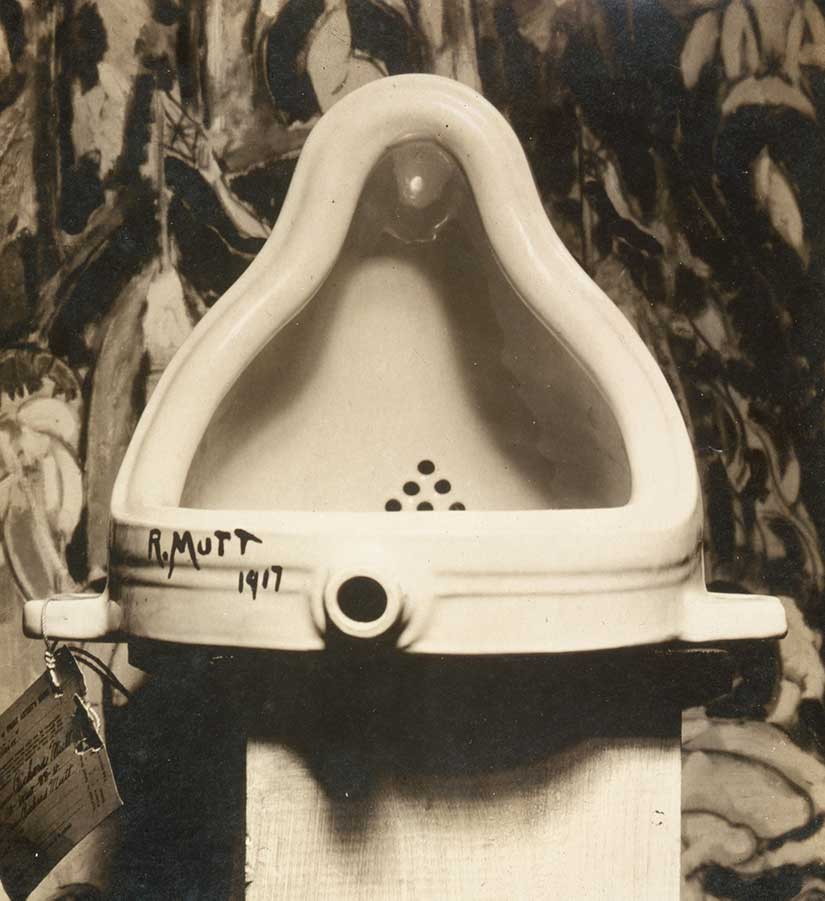
Diptych
A work of art made up of two paintings, sections or panels, usually fixed or hinged together.
Easel
A wooden stand on which an artist can place her canvas; the invention of portable easels in the 19th century made it possible for the impressionists to paint outdoors.
Expressionism
Expressionism is an artistic movement that emerged in the late 19th/early 20th century, primarily in Germany and Austria. It focuses on subjective emotions and inner experience, rather than objective reality, with colours and forms often distorted and exaggerated to convey intense emotional states. Artists sought to express the raw and primal aspects of human experience, often using vivid, shocking imagery to provoke a response in the viewer. The movement is often associated with figures such as Edvard Munch, Wassily Kandinsky, and Egon Schiele.
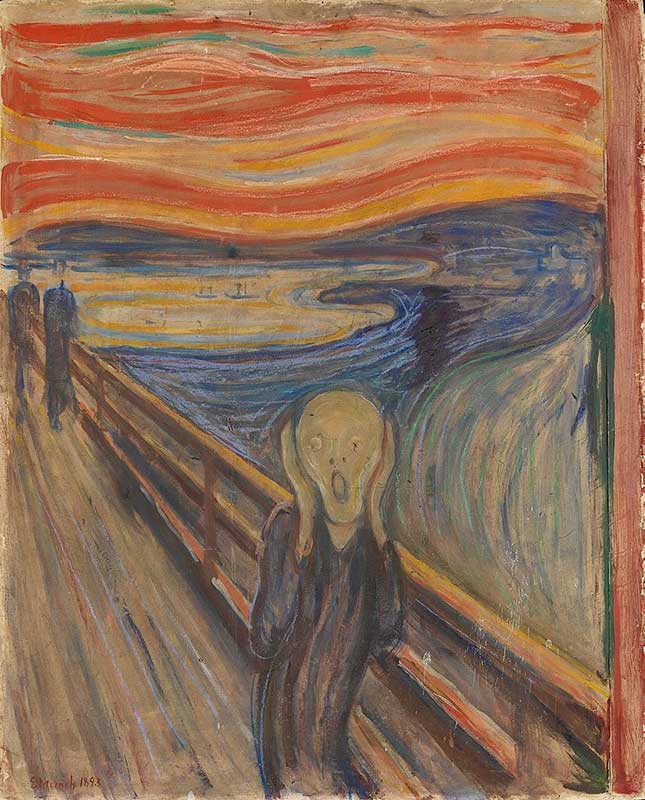
2. F to M
And now for our second batch: Fauvism to Motif
Fauvism
Comes from the French term ‘Fauves’, meaning ‘wild beasts’; an artistic movement from the first decade of the 20th century that emphasised strong colours and bold brushstrokes over realistic representations of people or scenes. Fauvism was a reaction against the academic art of the time, which was focused on realistic depictions of the world. Key exponents are Henri Matisse, Andrew Derain, Maurice de Vlaminck, and Raoul Dufy.
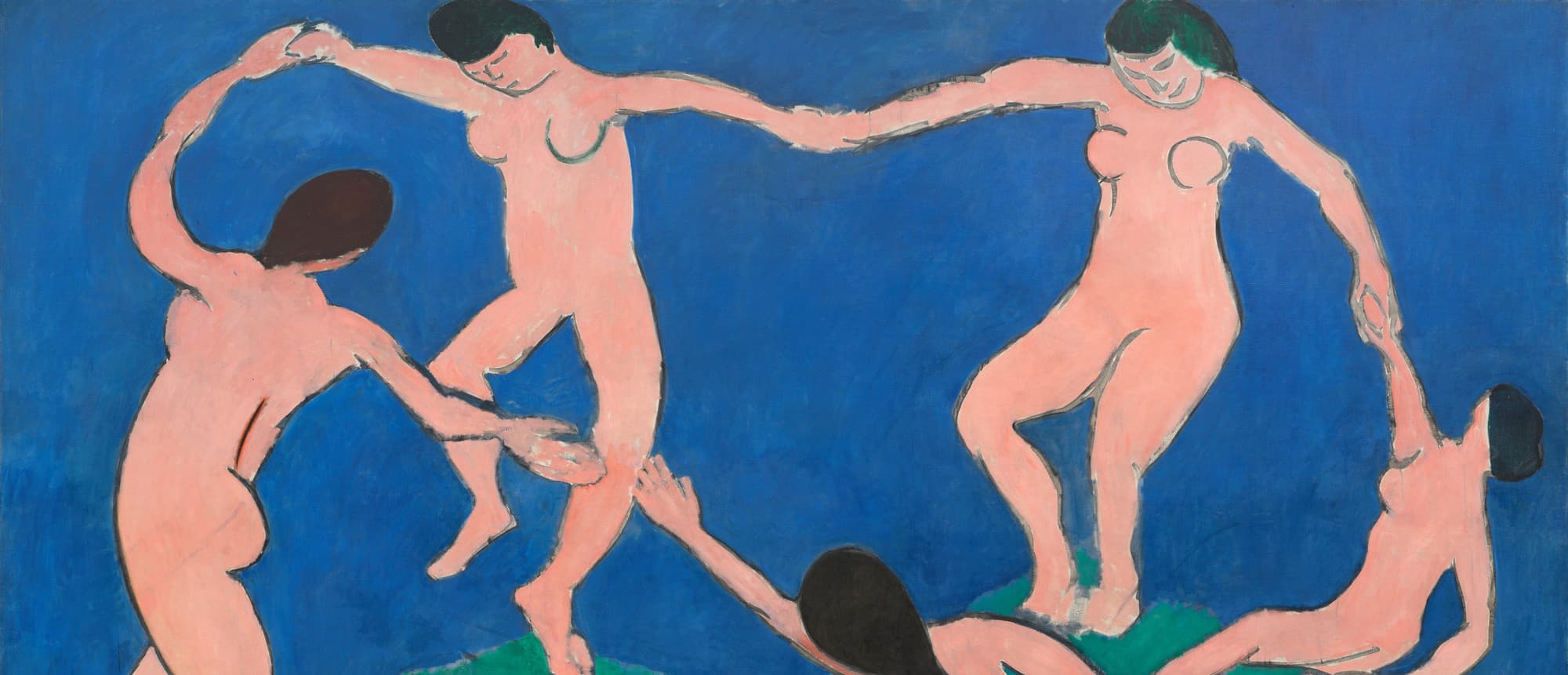
Fresco
The word "fresco" comes from the Italian word "affresco," which means "fresh. A fresco is a painting technique that involves applying pigments, usually water-based, to a wet plaster surface. " In fresco painting, the pigments are absorbed by the wet plaster and become part of the wall or ceiling surface as it dries and hardens, creating a long-lasting, durable work of art. Fresco painting was developed in ancient Greece and Rome and became a popular medium during the Renaissance period. It was commonly used to decorate the walls and ceilings of churches, palaces, and public buildings. The world's most famous frescos are those which decoarate the Sistine Chapel.

Gothic art
Gothic art is a style of art that originated in France in the 12th century and was prominent until the 15th century. It is characterised by intricate detailing, ornate designs, and a focus on religious themes. Gothic art is often associated with the architecture of the period, which featured towering cathedrals with pointed arches, ribbed vaults, and elaborate stained glass and flying buttresses. Gothic art is the most famous style to come out of the Medieval period, which spanned the 5th to 15th centuries.
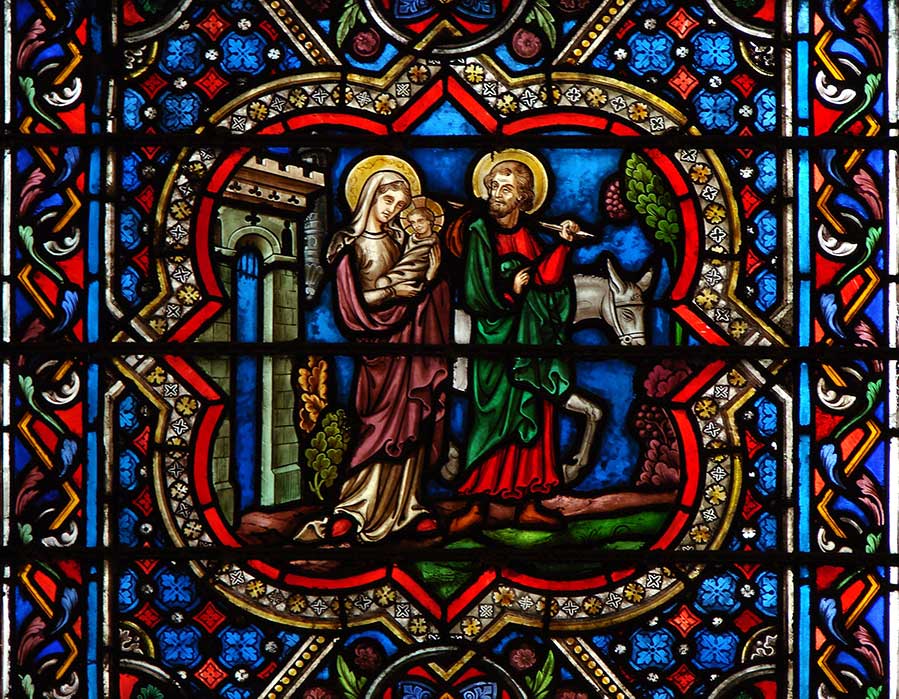
Impasto
The Italian word for ‘mixture’; describes where paint is thickly laid on a surface, so that brushstrokes are visible.
Impressionism
The style of art that developed in Paris in the 1860s which sought to capture the essence and feel of a scene rather than portray it with near-photographic accuracy; the impressionists often worked outside, using bright colours and rapid brushstrokes, often seeking to capture the fleeting effects of light. Key members of the group are Claude Monet, Edouard Manet, Auguste Renoir, Edgar Degas, Camille Pissarro and Paul Cezanne. The impressionists were a tight-knit group who exhibited together eight times between 1874 and 1886. They started to go their separate ways and some experimented with different styles of art (especially pointillism and post-impressionism) from the early 1880s onwards. Monet was the longest lived impressionist; he died at the age of 86 in 1926.

Landscape
A painting that has nature as its primary focus; landscape paintings are usually wider than they are tall.
Medieval Art
Medieval art is art from the Middle Ages, a period that spanned roughly from the 5th century to the 15th century in Europe. During this time, Christianity played a central role in shaping art and culture, and much of the art produced during this period was religious in nature. As well as its focus on religion, Medieval art tends to be flat or two-dimensional and frequently uses previous materials such as gold, silver and gemstones. The production of illuminated manuscripts, which were richly decorated books that often contained religious texts, was a significant part of medieval art. So too was Gothic art and architecture, which emerged in the 12th century.
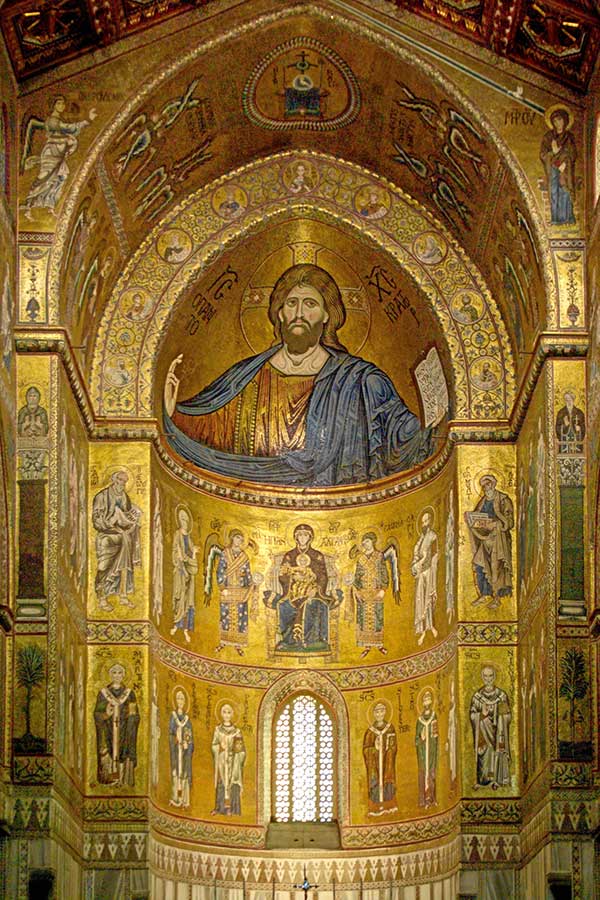
Minimalism
An American artistic movement from the 1960s which uses simple geometric shapes that do not signify any particular meaning. Minimalists used industrial materials (eg fibreglass or aluminium) and mathematics to arrange their works.
Modern art
The art created from the late 19th century to the mid-20th century. Modern art is characterised by a departure from traditional, representational art and a focus on experimentation and innovation in both technique and subject matter; it is often associated with social and cultural change, in particular industrialisation, urbanisation and new technologies. Modern art encompasses a wide range of styles and movements, including Impressionism, Expressionism, Cubism, Surrealism, Abstract Expressionism, and Pop Art, among others. Artists such as Claude Monet, Vincent van Gogh, Pablo Picasso, Salvador Dali, Jackson Pollock, and Andy Warhol are all considered important figures in the development of modern art. Picasso's Guernica is one of the most important and poignant works of modern art.

Monochrome
A painting rendered in only one colour. Picasso's Guernica, immediately above, is a good example.
Motif
An image, particularly one that dominates a work or recurs so as to form a pattern.
3. N to P
And batch three: Neo-classicism to Primitivism
Neo-classicism
A style that developed in the second half of the 18th century which sought to replicate or draw inspiration from classical (i.e. Greek or Roman) art. Neo-classicist artists often sought to convey moral and political messages through their works. The movement was closely associated with the Enlightenment, which emphasised reason and rationality, and many neoclassical works reflect these values. Some of the most notable neoclassical artists include Jacques-Louis David, Antonio Canova, and Jean-Auguste-Dominique Ingres.
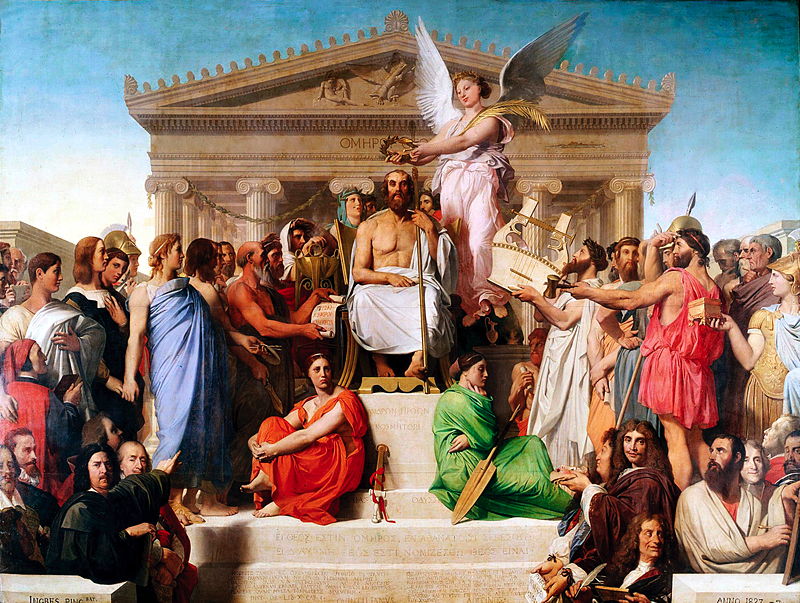
Neo-impressionism
'New’ impressionism; usually a reference to the works of the pointillists, who rejected the spontaneity of impressionism and used scientific colour theory to build up pictures using thousands of tiny dots. Georges Seurat and Paul Signac are the most famous exponents of this technique. To be distinguished from post-impressionism.
Old Master
One of the great European painters from about 1500 to the 1700s, especially those known for their technical brilliance. Examples of Old Masters are Leonardo da Vinci, Michelangelo, Sandro Botticelli, Rembrandt van Rijn, Titian, Johannes Vermeer and Peter Paul Rubens.
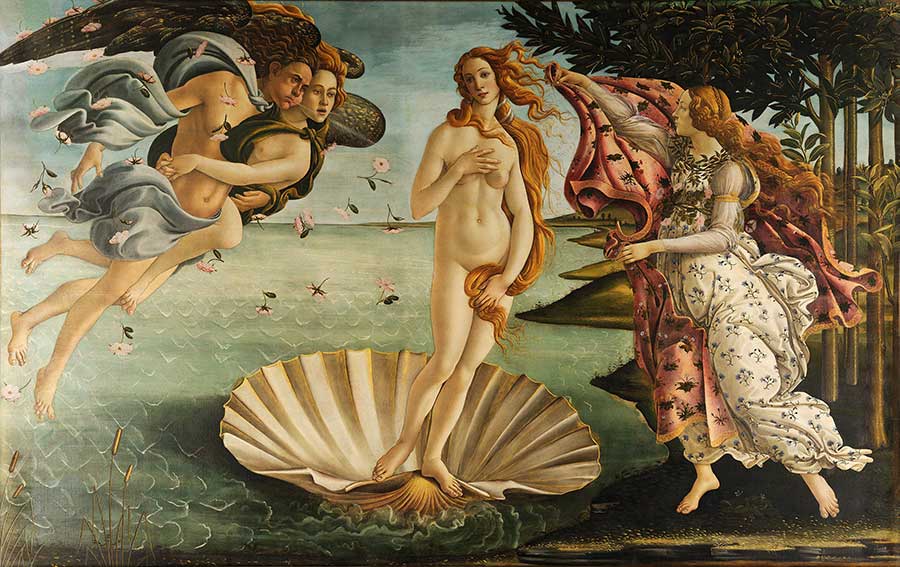
Op Art
Op art, short for "optical art", is a style of art that uses optical illusions and geometric patterns to create visual effects that trick the eye and create the illusion of movement, depth, and three-dimensionality. The term "op art" was coined in the 1960s, and the style was popularised by a group of artists who were inspired by scientific research into perception and visual cognition. Op art typically features black and white geometric patterns, often arranged in a repetitive and symmetrical manner. When viewed from a certain distance or angle, the patterns seem to pulsate, vibrate, or appear to be in motion, creating a dynamic visual experience for the viewer. Op art is often associated with the psychedelic art and fashion of the 1960s, and was used in advertisements, album covers, and fashion designs. Bridget Riley is the most famous Op Artist.
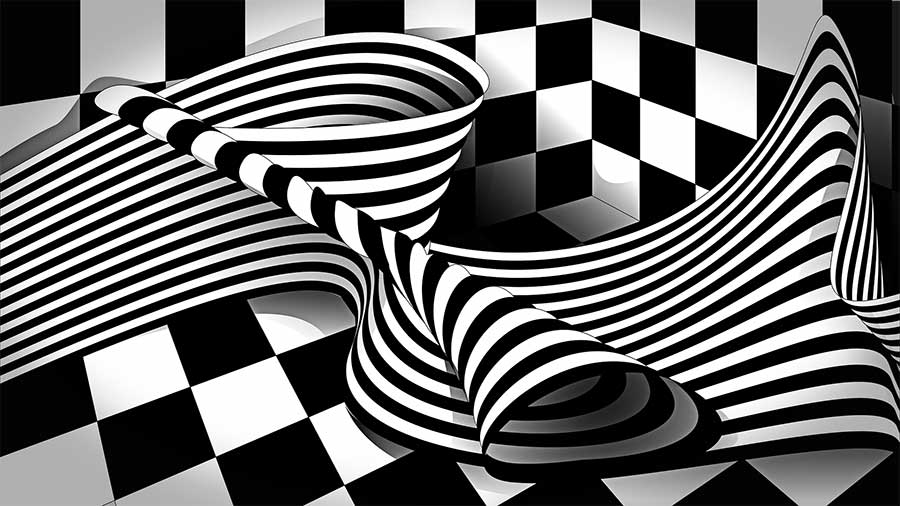
Palette
This term has two meanings; (1) the range of colours used by an artist in a painting (e.g. she used a “wide/restricted palette”); (2) a thin wooden or plastic tray on which an artist holds and mixes paints.
Pointillism
A neo-impressionist technique that emerged in the late 19th century, principally associated with French painters Georges Seurat and Paul Signac. Pointillism builds up paintings using small dots or strokes of colour to create a cohesive image. Founded on scientific principles of colour theory, the pointillists believed that their paintings would be more luminous and vibrant because the eye perceives colours differently depending on their adjacent colours.
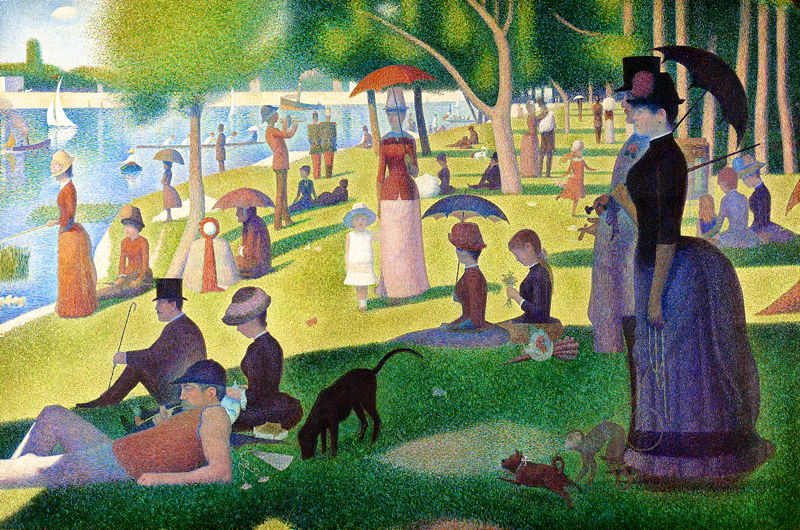
Pigment
Fine powder which when mixed with another fluid (usually oil or water) becomes paint.
Plein air
French term for outside; most often applied to painters from the Barbizon school and the impressionists, who first began to paint outside as opposed to in a studio.
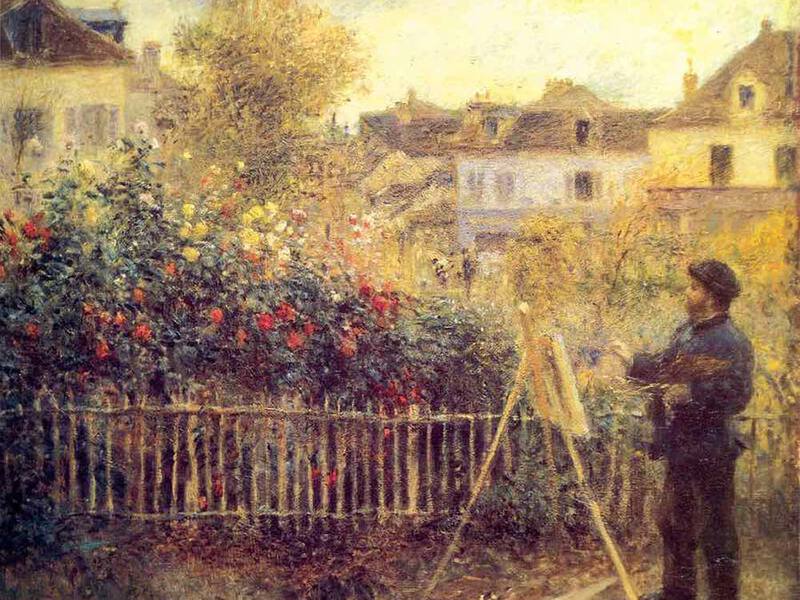
Pop art
Pop art is an art movement that emerged in the 1950s and reached its peak in the 1960s, primarily in the US and Britain. It was a reaction against the elitism and exclusivity of the traditional fine arts and sought to incorporate the imagery and iconography of popular culture into art. Pop Art artists used bright, bold colours and bold, graphic designs, often incorporating commercial imagery, advertising, and mass media culture into their work. Some of the most famous Pop Art artists include Andy Warhol, Roy Lichtenstein, and Claes Oldenburg. Warhol's iconic images of Marilyn Monroe, Elvis Presley, and Campbell's Soup cans are some of the most recognisable examples of Pop Art. Pop Art is often seen as a commentary on the commodification of culture and the increasing influence of mass media on society.
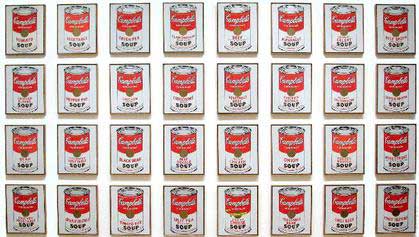
Portrait
A representation of an individual or individuals, usually intended to capture their likeness or essential features.
Post-impressionism
The work of artists who were influenced by impressionism, but sought to move beyond its limitations. Impressionism ultimately sought to depict the essence of real life scenes, albeit using loose brush strokes. Post-impressionism, by contrast, moves beyond capturing real life scenes, often emphasising emotion and personal expression. Van Gogh’s works from about 1888 are good examples, as are the works of Paul Gauguin and the later works of Paul Cezanne. To be distinguished from neo-impressionism. See further our Top 10 Post Impressionists Works page.
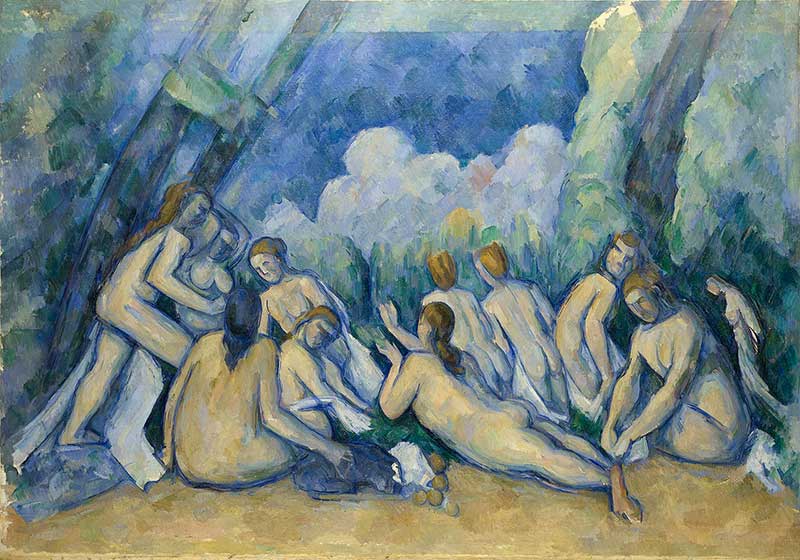
Primary colour
The three base colours (blue, red and yellow) that are combined to make other colours.
Primitivism
Primitivism is an artistic movement that emerged in the late 19th and early 20th century, particularly in Europe. It is characterised by a fascination with the art and cultures of non-Western or "primitive" societies, such as African, Oceanic, and Native American cultures. Primitivist artists sought to break free from the conventions of Western art, which they saw as artificial and elitist, using bold, abstract forms, vibrant colours, and rejecting traditional perspective and proportion. Primitivist art often incorporates masks, totems, and other ritual objects, as well as imagery drawn from nature and the unconscious mind. Paul Gauguin is the most prominent primitivist artist.
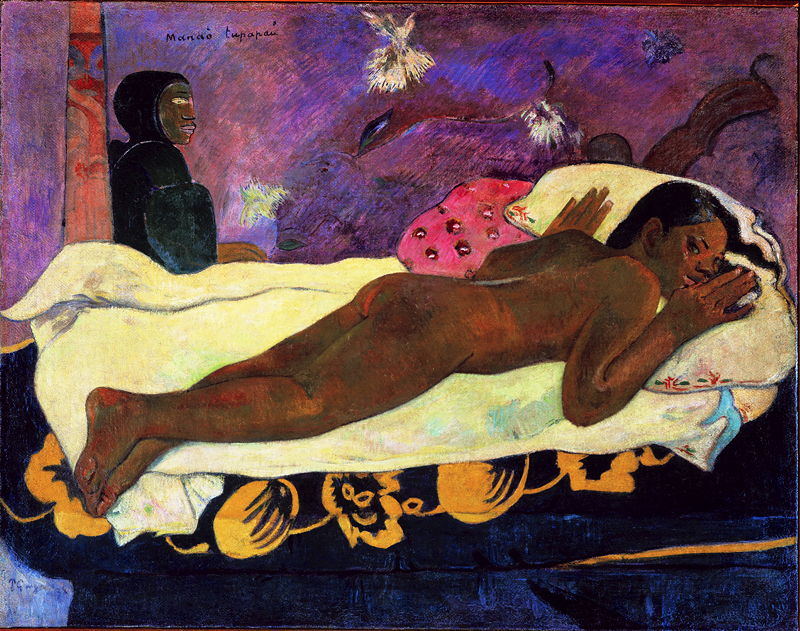
4. Q to Z
And instalment four: Realism to Triptych
Realism
An artistic movement emerging in France in the mid-19th century as a reaction against idealism and romanticism. Realist artists sought to represent the world as it actually is, focussing on normal people and everyday experiences. The most famous realist artists are Gustave Courbet, Jean-François Millet and Honoré Daumier.

Rococo
The Rococo period emerged in Europe in the early 18th century, reaching its peak in about 1750. It followed the Baroque period and aimed to produce less dramatic and lighter and more playful works of art and decoration. Characteristics of Rococo works include pastel colours, flowing lines and delicate forms; subjects are often whimsical and light-hearted, such as everyday life, romantic scenes and pastoral landscapes. Rococo paintings were typically displayed in ornate gilded frames. Rococo was replaced by the more formal Neoclassical style of the late 18th century. Its most famous artists included Jean-Honoré Fragonard, Antoine Watteau, and François Boucher.
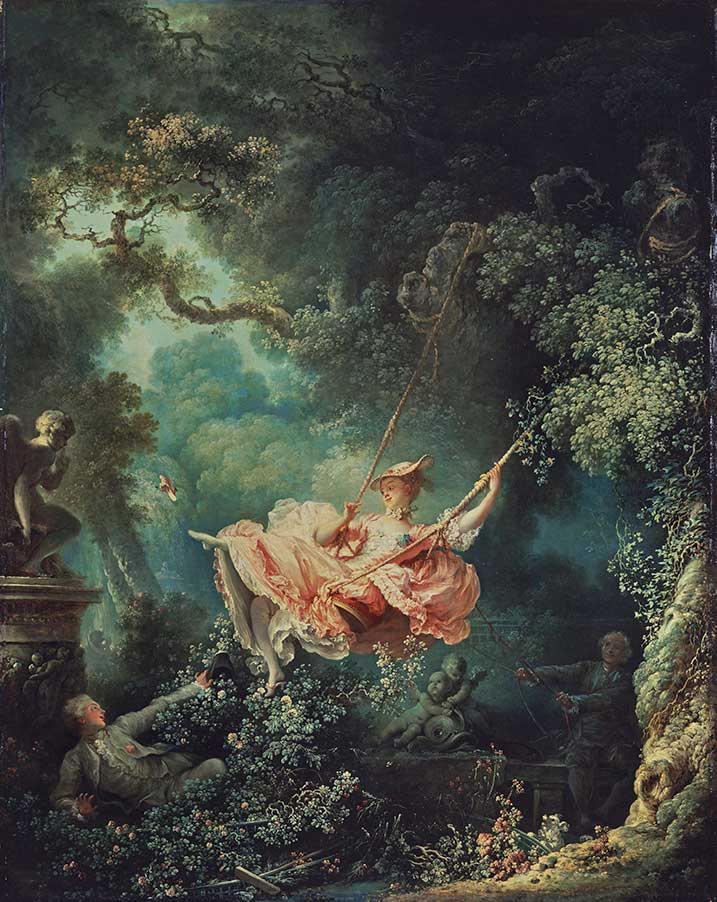
Romanticism
An artistic movement emerging in Europe in the late 18th and early 19th centuries, focussing on emotion, individualism, imagination and the celebration of nature and the supernatural. Characteristics of romantic works include the use of exotic settings, bold colours, dynamic compositions and dramatic contrasts of light and shadow. The most famous romantic artists include William Blake, Eugene Delacroix and JMW Turner. Romanticism was also a literary movement, with notable writers including William Wordsworth and Mary Shelley.
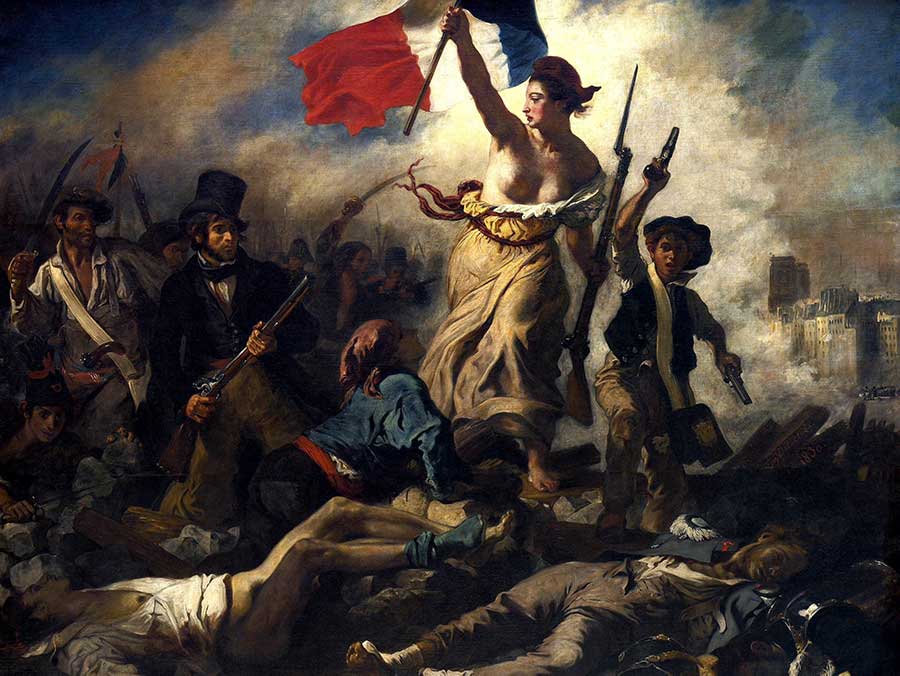
Renaissance
An Italian term meaning ‘rebirth’; applied to Italian art from the 14th century, later spreading throughout Europe, which revived the classical art of Greek and Roman empires. The Renaissance period lasted until the 17th century, with works often seeking to capture the beauty and complexity of the natural world through techniques including perspective, chiaroscuro and sfumato. Some of the most famous Renaissance painters include Leonardo da Vinci, Michelangelo, and Raphael, who are known for their monumental works of art, including the Mona Lisa, the Sistine Chapel ceiling, and the School of Athens. Other notable Renaissance painters include Sandro Botticelli, Titian, and Jan van Eyck.
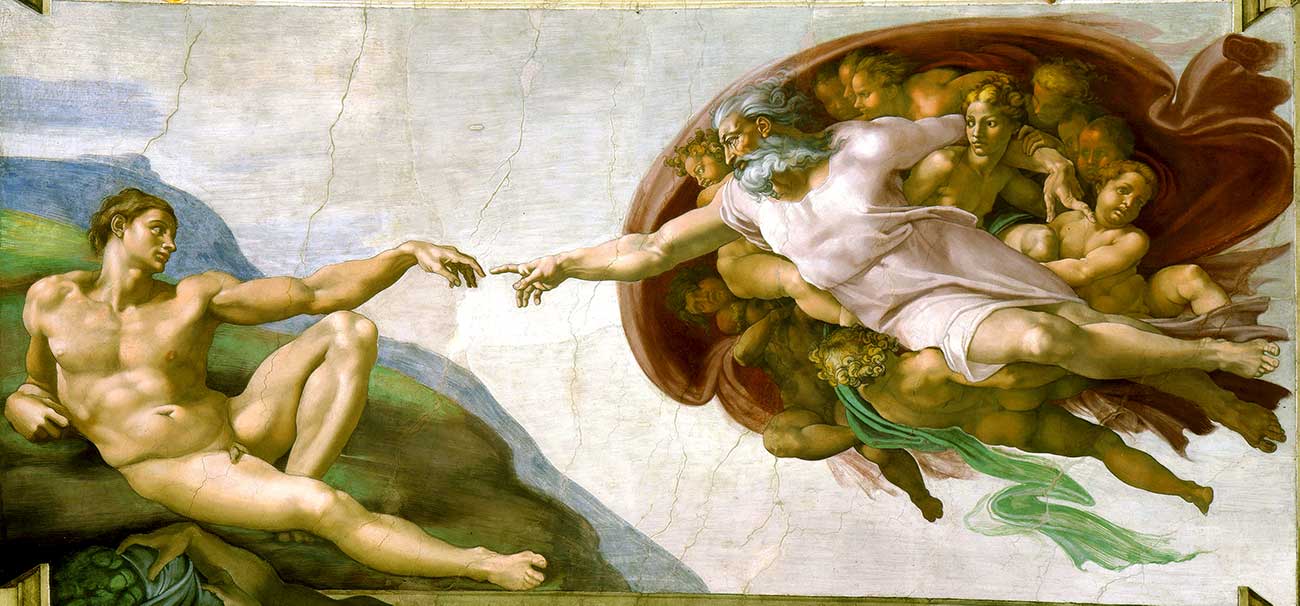
Sculpture
A sculpture is a three-dimensional work of art that is created by shaping or carving materials such as stone, wood, metal, clay, or other materials. Sculptures can take a wide range of forms, from small figurines and abstract shapes to large-scale installations and public monuments. Sculpture has a long history, dating back to ancient civilisations such as the Greeks and Romans, who created lifelike statues of gods, heroes, and important historical figures. The world's most famous sculptures include Michelangelo's David and Rodin's The Kiss. Edgar Degas is the most famous impressionist sculptor - he focused on ballerinas and jockeys.
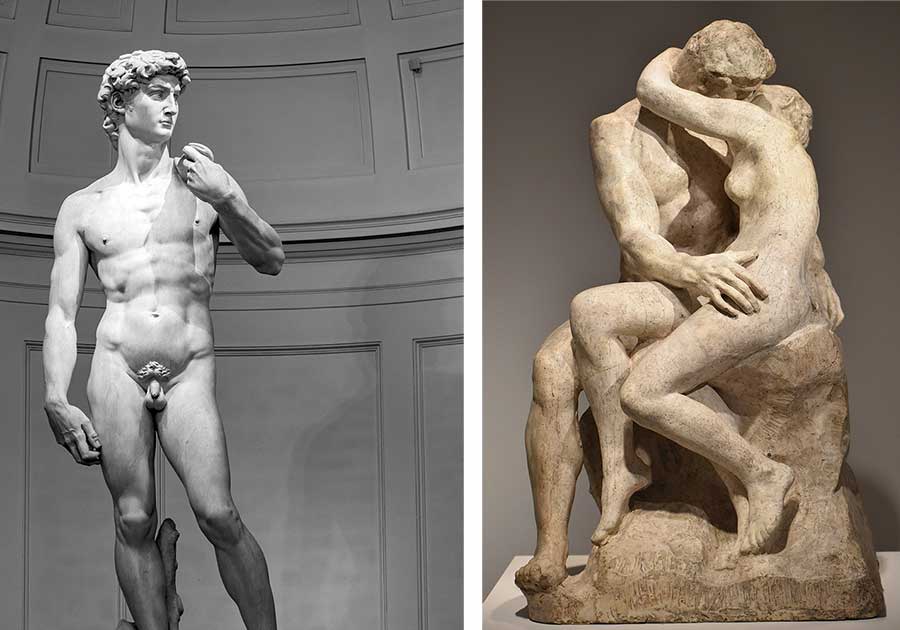
Sfumato
Sfumato is a painting technique that originated in Renaissance Italy. The word "sfumato" comes from the Italian word "fumo," which means smoke or vapour, and the technique is so named because it creates a hazy, misty effect in a painting. Sfumato involves the gradual blending of colours and tones in order to create a subtle, almost imperceptible transition between different areas of a painting. This is achieved by applying multiple layers of transparent paint, and then softening the edges with a brush. Leonardo da Vinci was a master of the sfumato technique, and his most famous work, the Mona Lisa, is renowned for its use of this technique.
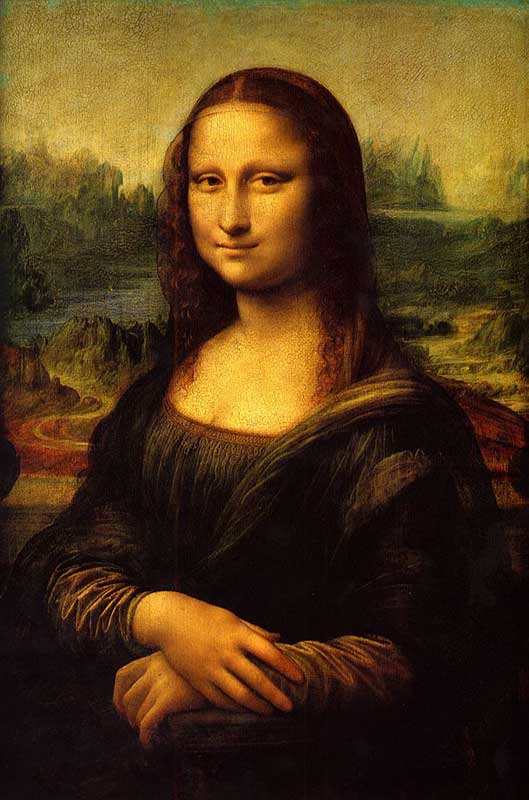
Still life
A painting of an inanimate object, such as a bowl of fruit.
Surrealism
An artistic movement that emerged in Europe in the early 1920s, as a reaction to the devastation of World War I. Surrealism uses images that are dreamlike, irrational and even absurd. Some of the most famous surrealist artists are Salvador Dali, Max Ernst, Rene Magritte and Joan Miro. Dali’s The Persistence of Memory, with its melted pocket watches, is a good example. French poet Andre Breton led the movement, which extended beyond art to other aspects of culture and even politics, publishing his “Surrealist Manifesto” in 1924.
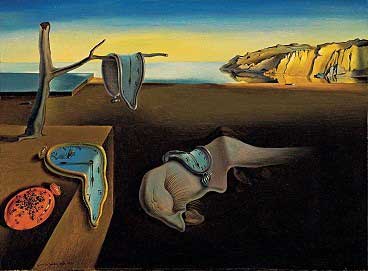
Symbolism
Symbolism in art is the use of symbols or imagery to represent ideas, emotions, or concepts. Symbols are visual representations of abstract ideas or concepts, and they can be found in many different art forms, including paintings, sculptures, drawings, and photographs. In art, symbols are often used to convey a deeper meaning or to add layers of complexity to a work. For example, a rose might symbolize love or beauty, while a skull might represent death or mortality. In this way, symbols can be used to evoke emotions, create a sense of mystery or intrigue, or to highlight the artist's personal beliefs or values.
Trompe l’oeil
A French term meaning ‘deceiving the eye’; used to describe paintings which contain some sort of optical illusion (usually using perspective techniques).
Triptych
A work of art consisting of three paintings of sections, usually fixed together.

